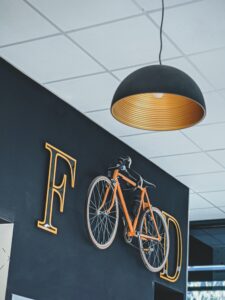Share

If it’s not the first time you’ve encountered terms: Power Platform, Power Apps, Power Automate, but you don’t have a clue what to associate them with, you’re at the right place!
However, if you see them for the first time – I hope that my article will plant a seed of curiosity in a universally understood processes automation.
Based on my first experiences of these tools, I was aware of how great their capabilities are, but it was difficult for me to imagine where I could use them in everyday business life. In the following article, I would like to show You 3 examples of applications that may inspire you to take the first steps towards processes improvement and automatization in your organization.
“Where is the item available” with Power Platform?

Imagine a situation where you go to the store, e.g., looking for a new jacket, and it turns out that your size has been sold out (I will just add that You set Your heart on this jacket). Disappointment paints so much on your face that the store manager notices it and says, Good morning, I see that You like this jacket. No size? Please wait a minute. In 30 seconds, he returns with the information that the jacket is waiting for you in store X or Y (or in the pro-client version: we can order this jacket, it will be available for collection tomorrow).
The first example, how to use the Power Platform, is an application for merchants, sales managers and customer advisors, which allows you to check the status of the selected product at other points of sales. The user has several options for choosing the desired product:
- The first of them is the selectable DropDown list. It can be used with a small variety of assortment.
- The second way is the improvement of the first – I mean adding a search engine to the dropdown filter. You can narrow your search directly to the product name, but it is also possible to search by other attributes that are assigned to the data source, such as product group or product brand.
- The third, most sophisticated way is to use the built-in barcode scanner component. It requires a product to be physically in front of you (or at least its barcode), but if You meet this condition, it is the fastest and probably the most effective of the presented methods.
This is where the user’s role ends. If you already have the product you’re looking for, the app will filter the previously loaded points of sales database and sort it by distance form Your place. We don’t need any connection to third-party services like Google Maps or Bing for this operation. Power Apps recognizes longitude and latitude values and uses an algorithm to calculate the distance between two points.
After selecting a destination, we can view more details about it, as well as book the product in the selected store.
Fast food bar with Power Platform

Who among us has never been to a fast-food restaurant let him first throw a stone (just not in the screen!). I assume that few people qualify for this group, and even if they do not have a stone at their hand ????.
Fast food bars are a great place for Power Apps to test out. We can use it for comprehensive meal ordering service .
Step one: Choose a dish from the categorized menu with photos that call out to us: Eat me! Of course, configure our order freely: an additional drink, double meat, or enlarged sweet potato chips? You can add what You want to Your order in a clear and transparent way. The application will propose You ideas for additives and dessert of the day, which will allow You to increase average receipt.
Step two: After a difficult selection in step one, the customer will receive a printout of their lucky number and can start waiting. The order is placed at this time for execution. The restaurant worker chooses his mission from the waiting list and begins preparing a meal. The system assigns the order to him and marks the order status as “in the preparation”. Order numbers and statuses can be displayed on the screen for customer information.
Step three: The final stage is the release of the meal. Here, there is another status change that to “Ready for Pickup” and then to “Received” after the satisfied customer gets his order.
In addition to the entire process of handling from the choice of dishes to the issue of the order, it is possible to generate all kinds of statistics. As an example, I will mention: the average meal preparation time, the best-selling products, or the highest receipt of the last month. And if we combine statistics with PowerBI, whose component can also be used in PowerApps, we are basically limited only by imagination…
Fleet Management with Power Platform

Your wholesale and retail business grows year after year. You already have dozens of employees at different levels, a modern office building in a convenient location. Market competition is starting to count against you. Due to the industry and business model, you have a large sales force that requires a company cars for their work. Logistics specialist begins to complain about excess work, because in addition to the tasks related to the warehouse, all matters related to the fleet fell on her…
What can Power Platform suggest in this topic? Quite a lot!
Starting from scratch – a list of cars with the smallest details about them. Such a list would certainly be kept in Excel, which is a very good program, but there really are better solutions. In Power Apps, you can present your fleet in a more pleasing way for the eye, with a photo gallery, or assigning a user to a vehicle. In addition, the application may remind car users to perform a car review, tires swap or other service visits.
Reporting the kilometers driven after the end of the day/week/month could be an interesting feature. This allows You to track the activity of Your traders. And if You are wary of Your mobile employees and You think that there is never too much control, you can install a module to check the employee’s current location. The application can report where the employee’s phone is located (because the location of the phone will be the source of data in this case) at the scheduled times or on demand.
In addition, you can add a module related to the transfer of photos by users. The car was crashed? The employee had an accident? Anyone scratched the bumper? Each event can be reported using a short form with a description of the situation, priority and several photos. Further steps to be taken by the office worker, who will promptly receive a message on his device.
And as the Power Platform will work in fleet management, maybe it’s worth going back to the warehouse mentioned before? There are certainly a lot of things to automate.
The logistics specialist likes it!
—
Author: Radosław Ciszewki

